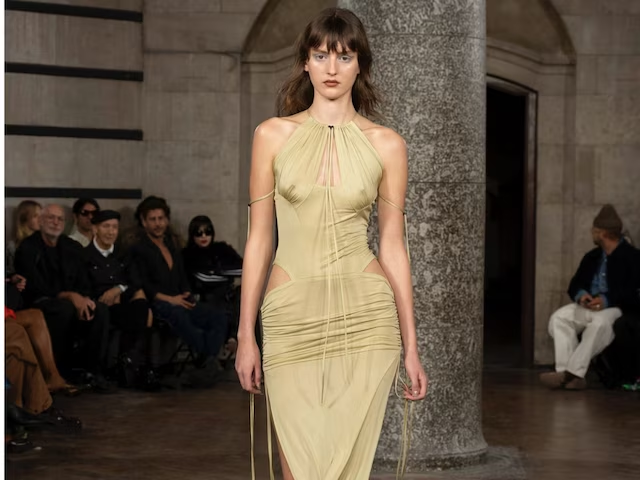Recent years in fashion have seen a curious evolution in trends, marked more by the incessant emergence and demise of micro-fads than by any lasting, substantial shift.
Apart from the ceaseless churn of the latest buzzwords—be it “-core,” “girl summer,” or various marketing gimmicks—there has been a notable absence of enduring style transformations on the runways.
However, at London Fashion Week this season, a tangible trend has emerged for the first time since the prevalence of “streetwear” became the dominant buzzword among editors. This trend, unlike fleeting TikTok phenomena, presents a real and measurable shift.
The current trend involves a resurgence of formal wear, adapted to contemporary tastes. London designers are reimagining classic tailoring and formal attire with personal touches, diasporic influences, and innovative materials. The reasons behind this informal formality taking the city by storm are not entirely clear.
This shift could reflect a broader cultural change. Gone are the days when people, regardless of their social standing, would change into casual or formal wear after a long day, spending significant time preparing their look.
Today, it’s common to finish work, quickly send a voice message to friends, and head straight to a club, often on a bike-share service.
This sense of fluidity and practicality was evident in the recent show by Newgen recipient Luke Derrick. His collection featured luminous suits made from durable, specially developed nylons, blending tracksuit comfort with Savile Row elegance.
Perfectly tailored crotches and color-changing blazers highlighted Derrick’s innovative approach, which combined the natural drape of materials with precise tailoring techniques.
Derrick expressed enjoyment in the deceptive simplicity of his designs, noting that while they may appear structured, they are essentially just shells. This playful trick, he explained, adds a layer of fun for those who see the garments up close.
The concept of versatile, day-to-night wear has materialized in a way that feels genuine and relevant. Derrick’s collection seems ideally suited for the modern creative who wears sweatpants during the day but needs something stylish for an evening event.
Priya Ahluwalia’s collection also embraced this evolving notion of formalwear. Instead of traditional tuxedos and gowns, Ahluwalia offered a more relaxed and sincere representation of her brand.

Her designs included flocked viscose sweaters adorned with intricate beads, reflecting her Nigerian heritage, and dresses featuring prints inspired by her grandparents’ first home in England. These personal touches made the garments feel deeply connected to her identity.
Similarly, Skepta’s revived label, Mains, took a playful, preppy approach to tailoring. Incorporating elements from school uniforms and childhood aspirations, Mains showcased ivory suits with compass prints, faux-fur-lined Kickers shoes, and ties with nostalgic designs reminiscent of UK garage culture.
Aaron Esh’s collection continued this trend with a focus on sophisticated yet casual attire. His third runway show featured wasp-waisted velvet smoking jackets paired with indie-style leather pants.
Gossamer silks and satin details maintained a casual vibe, while the collection’s muted tones and practical separates reflected a balance of elegance and wearability.
Sinead Gorey, known for her party-ready designs, presented a collection that played with the concept of British school proms.
Eschewing traditional satin gowns, Gorey introduced corset prints and spiked micro-skirts, catering to a younger audience seeking fun and edgy evening wear.
At 16Arlington, Marco Capaldo continued to look through intricate pattern-cutting techniques. The collection featured sheer midis with elaborate feathers and hybrid dress-t-shirts, blending elegance with a provocative edge.
Capaldo’s designs, adorned with python heels and pewter cuffs, reflected a commitment to extracting beauty from darker elements.
The contrasting approaches of JW Anderson and Simone Rocha further highlighted the extremes of this new trend. Anderson’s collection showcased leather garments that seamlessly transitioned from strap dresses to tutu-style skirts, suited for exclusive art fair afterparties.
In contrast, Rocha presented soft, whimsical puffball dresses that radiated a playful, party-ready spirit, demonstrating that luxury fashion now caters to a younger generation eager to embrace high style in a variety of contexts.
This season’s London Fashion Week has affirmed that modern luxury is increasingly about blending sophistication with practicality, reflecting the diverse and dynamic nature of contemporary fashion.


